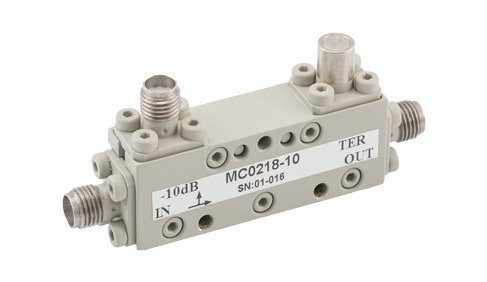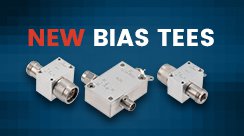Primer on Coaxial Connectorized Directional Couplers

In RF test and measurement, communication, and RF sensing, it is often necessary to extract a portion of the incoming and/or outgoing signal energy for measurement, monitoring, or signal processing purposes. In these cases, one of the fundamental passive components used to do this are RF Directional Couplers. Directional couplers differ from other RF couplers in that they are designed in a way to allow for extraction of a small portion of the signal energy from the forward and/or reverse directions by a set coupled amount with appropriate phase. As it isn’t always necessary to extract signal energy from both directions, in practice, some direction couplers have either the forward or reverse port terminated with a matched load to the other port impedances. This termination can be done during production or made available to the user via access to all of the ports. A directional coupler with both forward and reverse coupled ports accessible is typically referred to as a bi-directional coupler.
Whether it is a pre-terminated directional coupler or not, many directional couplers are fabricated with external coaxial connector ports. Directional couplers can commonly be found that are made with surface mount technology (SMT), coaxial connectors, waveguide ports, or directly fabricated using planar circuit technologies (i.e. PCB). Coaxial connectorized directional couplers could be made in a variety of ways, including as simply as modifying a larger and smaller coaxial cable with coupled center conductors and united shielding. It is more often that coaxial directional couplers are made using planar circuit technologies and then installed in a coaxial package with end-launch coaxial connectors attached to the circuit board. However, there are still directional couplers made from precision machined cavities. For higher frequency directional couplers, a coaxial directional coupler may even be made using a surface mount directional coupler broken out to RF ports attached to coaxial connectors. An example of a component that may be fabricated in one of these ways is a 1.0mm Coaxial Directional Coupler To 110 GHz.
Coaxial directional couplers benefit from coaxial connector broadband performance, which operates from DC to the highest frequency of the internal coupler structure or the coaxial connector standards, whichever is lower. Some coaxial connectorized directional couplers may be optimized for frequency operation at certain ranges, which may mean they are only specified across those ranges, and not the full coaxial connector standard operating frequency range. With coaxial connectorized directional couplers, the impedance of the ports is critical, as these need to be carefully matched to ensure balance across the coupler ports and proper coupling. Coaxial directional couplers are available that cover ranges from tens of megahertz at high power levels to over 100 GHz at proportionally lower power levels.

